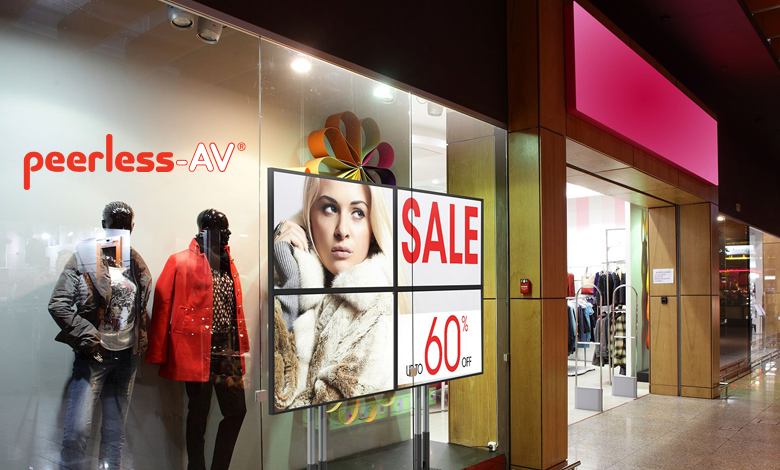According to a recent study analyzing the future of the digital signage market, the industry is expected to reach $31.7 billion by 2025. And as this market grows, one of the key verticals for advancement is retail. In fact, growing smart signage applications and the increasing transition of traditional stores to smart stores in the retail vertical are expected to offer high growth opportunities in the near future. As many retailers have come to know, the addition of digital signage not only offers an exciting way to share information with customers, enhancing the overall shopping experience, but it also provides numerous benefits for retailers.
For instance, according to InfoTrends, digital in-store advertising has 47.7% effectiveness on brand awareness and increases the average purchase amount by 29.5%. Further, results from an Arbitron study showed that one in five consumers stated they made an unplanned purchase after seeing a product advertised on a dynamic digital sign.
While making the leap to digital signage is a beneficial move for many retailers, there are a number of points that should be considered prior to implementation. Referred to as the 7 Key Elements of Digital Signage by the Digital Signage Experts Group (DSEG), Digital Signage Expo, and the Digital Signage Federation, I commonly refer to these considerations as the 5 R’s of Retail Digital Signage.
1. The Right Location
Finding the right location for digital signage is a crucial step in the process. It’s about finding that sweet spot that will benefit the customer, and also the retailer. Retailers want to find a location that is not only high traffic, but also a space where customers may congregate for an extended period of time. For example, checkout queues serve as a great opportunity for digital signage. As customers are stationary while in line, digital signage can be used as a distraction to reduce perceived wait time and share information on specials and promotions.
Another ideal location for digital signage is at the entrance to the retail store, where there is a lot of foot traffic that retailers will want to take advantage of.
Related: Three Strategies for Creating Retail Brick-and-Mortar “Stickiness”
2. The Right Display
Just as retailers would want displays in the right location for optimal viewing, choosing the appropriate display for the location is also important. With outdoor displays, it is imperative that the solution be built to withstand extreme weather conditions for both warm and cold climates. As the display may be in an area that is not consistently in view, it’s crucial that the display also feature impact-resistant glass, to protect against vandalism. The display must also be optically bonded and anti-reflective to reduce glare, even in direct sunlight. If the display will be located inside, the functionality of the signage will also determine what type of display is chosen. For example, more and more, retailers are turning to LED displays as they offer a truly seamless aesthetic that makes content pop.
3. The Right Mount
Upon selecting the location and type of display for a retail application, the next step is determining the best mount for the signage. In choosing a mount, retailers should look to the features offered, including safety, durability, and security as they are necessary benefits to consider.
In a retail application, ideal wall mounts will feature a slim design with quick release functionality for easy accessibility when servicing the display. Ceiling mounts are also a top choice for retail locations as signage can be placed above specific areas in a store, helping to draw customers to that location. Many retail locations will also want to consider floor-standing kiosks to enable wayfinding, entertainment and even self-service actions like store credit card billing, product locators, and online ordering.
4. The Right Testing
Testing is an imperative step for a successful retail digital signage deployment. Before actually deploying the displays, the entire system should be tested. Retailers need to ensure the content, screen, and media player are all functioning together and that the content is being perfectly displayed on the screen.
5. The Right Content
Last, but not least, retailers will want to share the most relevant information with customers, and the location of the signage will have an impact on the type of information shared. As Alan Brawn notes on Digital Signage Connection, “At its best, content is the vehicle to realize the objectives, taking into consideration the viewer environment/conditions, demographics, and other unique requirements of a digital signage network.”
For retail locations, creating an interactive experience with content has proven to be successful again and again. With online shopping overtaking many brick and mortar retail locations, providing consumers with engaging content that provides key information and offers a custom experience that might not be achieved in an online setting can result in customer loyalty and an increase in sales.
Overall, retailers must be mindful of the relevancy of the content, understanding that irrelevant content negates the purpose of having digital signage—enriching the customer experience.

